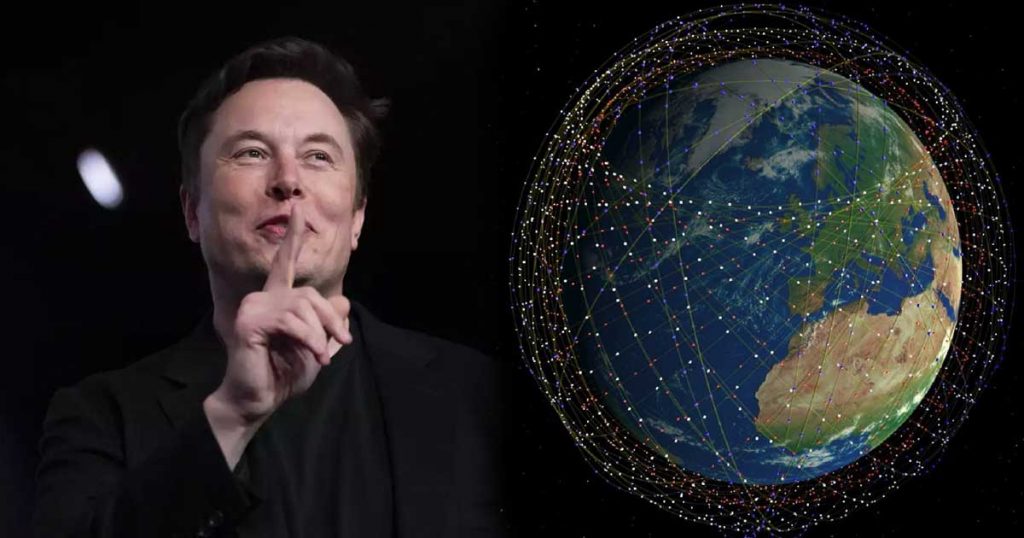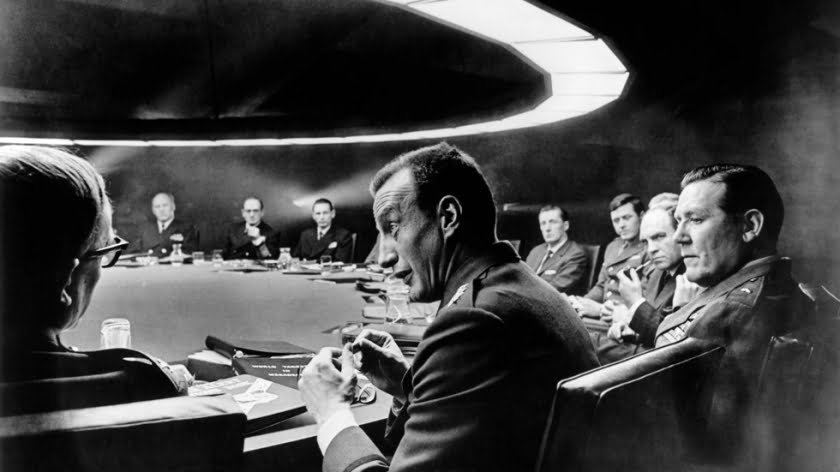
How Elon Musk’s Satellites
Serve the War in Ukraine
Manlio Dinucci / Associazione per un Mondo senza Guerre
(June 5, 2022) — Elon Musk, the richest man in the world whose wealth nearly doubled in the two pandemic years, offered $ 44 billion to buy Twitter, which he says would become “the platform for free speech across the country world.” Elon Musk owns SpaceX, an aerospace company based in California.
SpaceX makes rockets and satellites to build Starlink, a broadband Internet system that once is completed will cover the entire world. SpaceX has so far put 2,500 satellites into orbit with rockets carrying 50 satellites at a time and plans to place 42,000 Starlink satellites in low orbit occupying 80% of this space.
Starlink was presented as a commercial satellite system but has fundamental military applications. In fact, satellites in low orbit transmit signals at a much higher speed than those in geosynchronous orbit around the equator.
The US Army and Air Force fund and test Starlink to use its military capabilities. For example, last March, the US Air Force reported that conventional and nuclear dual-capacity F-35A fighters had carried out data transmission using Start link satellites at speed 30 times faster than traditional connections.
SpaceX’s Starlink satellites are already being used by the Ukrainian military to guide drones, artillery shells, and missiles into Russian positions. This is confirmed by General Dickinson, head of the US Space Command, who declared to the Senate that “Elon Musk’s Starlink demonstrates in Ukraine what the mega-constellations of satellites can do“.
Elon Musk’s SpaceX is part of the group of ten largest commercial satellite operators collaborating with US Space Command at the Vandenberg military space base in California.

Get Italy Out of the Ukraine/NATO War
Manlio Dinucci / International Association against War
More and more evident is the fact that the ongoing war is not only between Russia and Ukraine but between Russia and NATO. This is confirmed by the news given by the New York Times: thousands of Ukrainian soldiers are being trained in Britain. The United States, Great Britain, Canada, Denmark, Poland, and other countries have trained and armed thousands of Ukrainian soldiers since 2015, employed against Russia under US-NATO command.
At the same time, a growing campaign is being waged to spread hatred of Russia. In New York’s Central Park, a blood-red statue of Putin sitting on a tank was installed in a playground at which children shoot with their toy guns.
The type of education where children and young people receive training based on the ideas of white supremacism and neo-Nazism has been implemented for years in Ukraine in the school camps of the Azov battalion and is now spreading in the West.
While the Ukrainian government announces that it will burn 100 million Russian books (including all the literature classics) considered source of Evil, Italy contributes to this type of education by allocating 200 million euros stolen from the Italian school system for the payment of teachers’ salaries of Ukrainian schools.
The growing Italian military engagement on the Eastern front, and in other war scenarios entails increasing military spending. Mario Draghi, from the day of the dissolution of the Chambers (July 21) until today, has transmitted to the Chambers seven armament programs decrees whose cost exceeds 7 billion euros.
This amount includes the arming of US-made Predator drones through an agreement with the US government. Thus, Italian military spending continues to increase, rising to 29 billion euros a year in 2022, it is the equivalent of 80 million euros a day and is subtracted from fundamental social expenses.
“Overextending and Unbalancing Russia”
It Was All Written in the Rand Corp Plan

Manlio Dinucci | Il Manifesto & Global Research
- Today, the dangers of military escalation are beyond description.
- What is now happening in Ukraine has serious geopolitical implications. It could lead us into a World War III scenario.
- It is important that a peace process be initiated with a view to preventing escalation.
- Global Research condemns Russia’s invasion of Ukraine.
- A Bilateral Peace Agreement is required.

The 2019 Rand Corporation Report
(March 10, 2022) — The strategic plan of the United States against Russia was elaborated three years ago by the Rand Corporation (Il Manifesto, Rand Corp: how to bring down Russia, May 21, 2019).
The Rand Corporation, headquartered in Washington, DC, is “a global research organization developing solutions to policy challenges”: it has an army of 1,800 researchers and other specialists recruited from 50 countries, speaking 75 languages, spread across offices and other locations in North America, Europe, Australia, and the Persian Gulf. Rand’s US personnel live and work in more than 25 countries.
It is this model which was the inspiration for the new plan, Overextending and Unbalancing Russia, published by Rand.

CLICK TO ACCESS
The Complete May 2019 RAND Document
The Rand Corporation, which describes itself as a “nonprofit, nonpartisan organization,” is officially funded by the Pentagon, the US Army and Air Force, national security agencies (CIA and others), agencies in other countries, and powerful non-governmental organizations.
The Rand Corp. prides itself on having helped devise the strategy that enabled the United States to emerge victorious from the Cold War, forcing the Soviet Union to consume its resources in a grueling military confrontation. This model has inspired the new plan elaborated in 2019: “Overextending and Unbalancing Russia”, i.e. forcing the adversary to overextend itself in order to unbalance and knock it down.
These are the main lines of attack outlined in the Rand plan, on which the United States has actually moved in recent years.

First of all — the plan establishes — Russia must be attacked on the most vulnerable side, that of its economy strongly dependent on gas and oil exports: for this purpose commercial and financial sanctions must be used and, at the same time, Europe must be made to decrease the importation of Russian natural gas, replacing it with US liquefied natural gas.
In the ideological and informational field, it is necessary to encourage internal protests and at the same time undermine the image of Russia outside.
In the military field, it is necessary to operate so that European NATO countries increase their forces in an anti-Russian function. The US can have high probability of success and high benefits with moderate risks by investing more in strategic bombers and long-range attack missiles directed against Russia. Deploying new intermediate-range nuclear missiles in Europe aimed at Russia assures them a high probability of success, but also carries high risks.

By calibrating each option to obtain the desired effect — Rand concludes — Russia will end up paying the highest price in the confrontation with the US, but the latter and their allies will have to invest large resources to divert them from other purposes.
As part of that strategy — the Rand Corporation’s 2019 plan predicted — “providing lethal aid to Ukraine would exploit Russia’s greatest point of external vulnerability, but any increase in US-provided weapons and military advice to Ukraine would have to be carefully calibrated to increase costs to Russia without provoking a much larger conflict in which Russia, because of proximity, would have significant advantages.”
It is precisely here — at what the Rand Corporation called “Russia’s greatest external vulnerability point,” exploitable by arming Ukraine in a manner “calibrated to increase costs to Russia without provoking a much larger conflict” — that the rupture occurred.
Caught in the political, economic and military stranglehold that the US and NATO increasingly tightened, ignoring Moscow’s repeated warnings and proposals for negotiation, Russia reacted with the military operation that destroyed more than 2,000 military facilities in Ukraine that were actually built and controlled not by Kiev’s rulers but by US-NATO commands.
The article that three years ago reported the Rand Corporation’s plan ended with these words:
“The options in the plan are really only variants of the same war strategy, the price of which in terms of sacrifices and risks is paid by all of us.”
We European people are paying it now, and we will pay it more and more dearly, if we continue to be expendable pawns in the US-NATO strategy.
Manlio Dinucci is a research associate of the Centre for Research on Globalization, a geographer, and geopolitical scientist. In the 1980s, he directed the magazine Lotta per la Pace (born from “Appeal against the installation of nuclear missiles in Italy”) and was Executive Director for Italy of the International Physicians for the Prevention of Nuclear War, winner of the 1985 Nobel Peace Prize. His latest books are L’arte della guerra/Annali della strategia USA/NATO 1990-2016, Zambon 2016; and Guerra Nucleare Il Giorno Prima, Zambon Editore; 2017. Copyright © Manlio Dinucci.
Posted in accordance with Title 17, Section 107, US Code, for noncommercial, educational purposes.